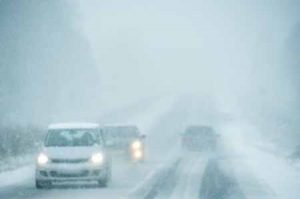 During the winter, when regions get hit with snow and ice, the more northern areas are typically more prepared to deal with these situations. When you must drive during or after a winter storm, you should have a cellphone and emergency items in your vehicle. In addition to having an emergency toolkit, you should give yourself adequate time and space on the road.
During the winter, when regions get hit with snow and ice, the more northern areas are typically more prepared to deal with these situations. When you must drive during or after a winter storm, you should have a cellphone and emergency items in your vehicle. In addition to having an emergency toolkit, you should give yourself adequate time and space on the road.
According to OSHA, the three “P”s of Safe Winter Driving are PREPARE for the trip; PROTECT yourself, and PREVENT crashes on the road.
PREPARE for the Trip
Car maintenance includes regular oil changes, making sure your battery is working well, making sure your windshield wiper fluid is full, and checking your antifreeze. Besides a cell phone, and emergency kit, you should also keep some bottled water and snacks in your vehicle.
PREVENT Crashes
During a winter storm—whether snow, ice, sleet, or freezing rain—there are many factors that compound to create more dangerous conditions for driving. These include existing crashes, cal malfunctions, poor windshield visibility from salt/de-icer on the roads, cold brake pads that render brakes less effective, and patches of black ice/slippery surfaces. Prepare for slower or stopped traffic and give yourself ample following distance to avoid a collision.
PROTECT Yourself
Always make sure your car’s windshield wiper fluid is full and battery is fully charged at the beginning of the winter season. Make sure your car has been well maintained and has enough gas and an emergency kit. When you head out in inclement weather, be extra cautious on the road and have adequate clothing in case the unexpected happens.
THINK TWICE…IN THE SNOW AND ICE!
Download flyer: STOTW_1203_Safety_on_the_Road_in_Winter_Weather Download Spanish flyer: STOTW_1203_Safety_on_the_Road_in_Winter_Weather_esp

